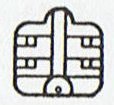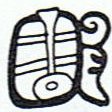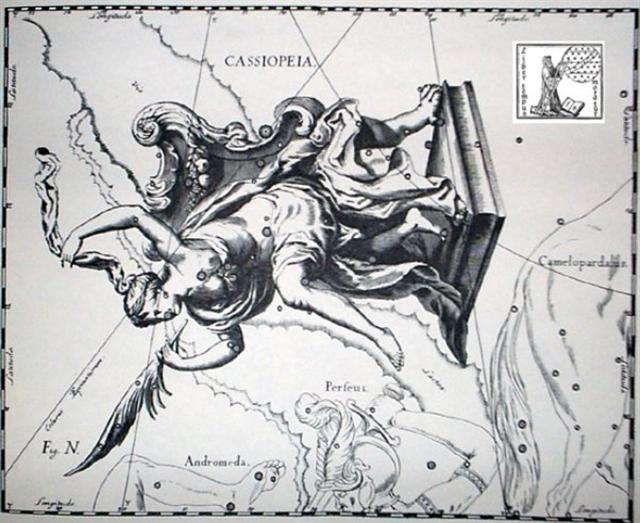In the Hindu system the lunar station corresponding to the Chinese Tail (number 6) is Mula, and significantly their station number is 19 (= 6 + 13):
If there is a 'bunch of roots tied together', then possibly one of them - the main root - has to be forced apart from the rest. Mula could have been the origin of the idea of a kava root needing to be separated (in violent fashion) from the rest: ... Sacred product of the people's agriculture, the installation kava is brought forth in Lau by a representative of the native owners (mataqali Taqalevu), who proceeds to separate the main root in no ordinary way but by the violent thrusts of a sharp implement (probably, in the old time, a spear). Thus killed, the root (child of the land) is then passed to young men (warriors) of royal descent who, under the direction of a priest of the land, prepare and serve the ruler's cup ... The Chinese Wei station is ruled by 9 stars. But Lesath (υ Scorpii) is not listed as a Hindu Mula star.
Possibly the kava 'separation' could refer to how there are 3 stars arriving earlier than the rest of the bunch:
383 (the manzil day number corresponding to June 3) is 128 (= 4 * 32) more than 255 (the right ascension day for Deneb-Akrab). Manzil day 1 (May 17) corresponds to Gregorian day 137 = right ascension day 57, and manzil day 365 (Alrescha 15) corresponds to Gregorian day 136 + 365 = 501 (May 16) = RA day 56. RA day 255 is Gregorian day 80 + 255 = 335 (December 1), corresponding to manzil day 335 - 136 = 199 (Az Zubana 3). 255 - 181 = 74 = 154 (June 3) - 80. And 199 - 181 = 18 = 383 (Pleione 4) - 365. 254 (Wei) = 354 (12 * 29˝) - 100. 382 (Pleione 2) = 365 + 17. Rei hata ia is positioned in Ca3-24 (with 32 * 4 = 128) and Pleione 5 is where 13 * 29˝ indicates a final. From Ca1-20, where Metoro said hakaraoa (choking on a fishbone), to maitaki in Ca3-22 there are 53 (= 52 + 1) days, which possibly implies the star Wei could belong at the beginning of an Easter Island 'moon station':
Earlier I mentioned 'a rib missing' at Ca1-20, when commenting on Metoro's 'fishbone', and I thought about Adam and Eve; "God brings the animals to the man for him to name. None of them are found to be a suitable companion for the man, so God causes the man to sleep and creates a woman from a part of his body (English-language tradition describes the part as a rib, but the Hebrew word tsela, from which this interpretation is derived, having multiple meanings, could also mean 'side'." (Wikipedia) but I also thought of the stranded whale (Cetus): ... There once lived a couple ... And the wife conceived a hatred to him, and she was flying from him through woods and wilderness; and he continued to follow her constantly. And one day that the woman came to the sea shore of Camas, ... she met a skeleton of a whale on the strand, and she heard the sounds of the wind passing through the sinews of the whale on the strand, and she fell asleep from the sounds ... The Easter Island word for rib is kavakava:
And hata (the scaffold for a dead person) is not far away in my thought, because the Marquesan 'hat tree' (fata) sounds like a description of the Mayan Kankin month at the end of summer: ... The Samoan fata is a pair of light timbers pointed at the ends and tied across the center posts of the house, one in front, the other behind the line of posts; rolls of mats and bales of sennit may be laid across these timbers; baskets or reserved victuals may be hung on the ends. The litter and the barrow are two light poles with small slats lashed across at intervals. The Marquesan fata is a stout stem of a sapling with the stumps of several branches, a hat tree in shape, though found among a barehead folk. These illustrations are sufficient to show what is the common element in all these fata identifications, light cross-pieces spaced at intervals. With this for a primal signifaction it is easy to see how a ladder, a raft, a henroost, an altar come under the same stem for designation. Perhaps Samoan fatafata the breast obtains the name by reason of the ribs; it would be convincing were it not that the plumpness of most Samoans leaves the ribs a matter of anatomical inference ...
"Six glyphs at least are clearly pictographic in base: Pop, mat; Sotz, bat; Xul, ?; Kankin, skeleton ribs; Moan, falcon; Kayab, turtle." (William Gates, An Outline Dictionary of Maya Glyphs.) Once I speculated regarding the similarities between the niu tree on one hand and the kankin tree among the Mayas on the other:
The missing 'rib' in Ca1-20 (30 days before the pair of niu) could be 'the main root': ... The four bereaved and searching divinities, the two mothers and their two sons, were joined by a fifth, the moon-god Thoth (who appears sometimes in the form of an ibis-headed scribe, at other times in the form of a baboon), and together they found all of Osiris save his genital member, which had been swallowed by a fish ...
Algenib means the side, but I have no explanation for Ksora, δ Cassiopeiae, at her right knee:
| ||||||||||||||||||||||||||||||||||||||||||||||||||||||||||||||||||||||||||||||||||||||||||||||||||||||||||||||||||||||||||||||||||||||||||||||||||||||||||||||||||||||||||||||||||||||||||||||||||||||||||||||||||||||||||||||||||||||



























